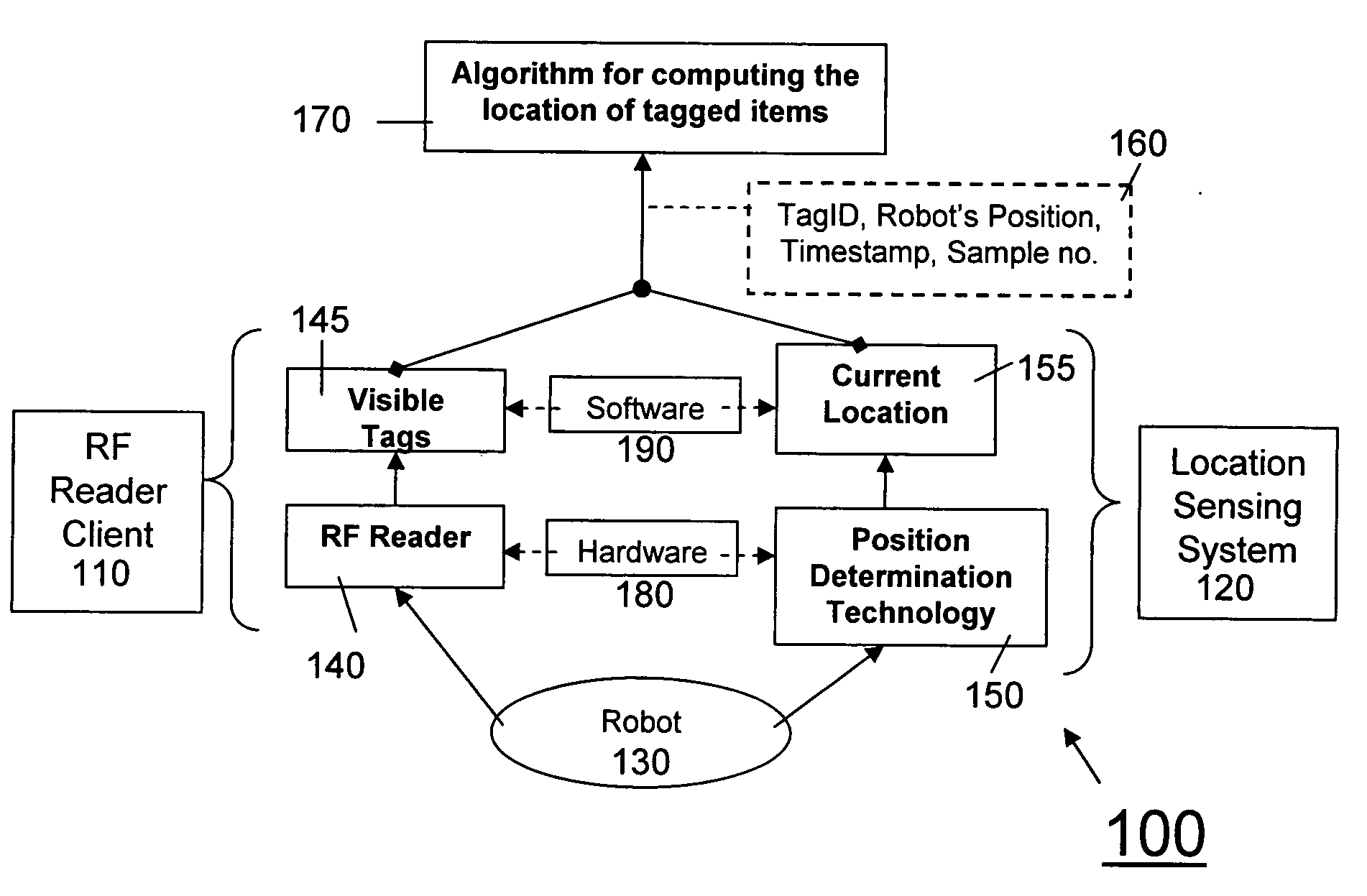Method and system for autonomous correlation of sensed environmental attributes with entities
a technology of environmental attributes and entities, applied in the field of automatic recording of the values of environmental attributes, can solve the problem of physical constraints limiting the distance at which tags can be detected by the tag reader
- Summary
- Abstract
- Description
- Claims
- Application Information
AI Technical Summary
Benefits of technology
Problems solved by technology
Method used
Image
Examples
Embodiment Construction
[0017] An embodiment of the system of the invention is described in which the environmental attribute being sensed is location. Based on this description, other embodiments of the system of the invention are easily imagined in which the environmental attribute being measured is something other than location. Examples include temperature, noise level, brightness, humidity, and velocity.
[0018]FIG. 1 gives a logical flow chart of the system of the invention 100. A robot 130 travels autonomously through a designated area. It is equipped with an RF tag reader 140, by means of which RF reader client software 110 is able to detect nearby tags 145. At the same time a position determination sensor 150 enables location sensing software 120 to determine the present location 155 of the robot 130. The information from the tag 145 and the current location 155 are combined into a detection record 160 associating this information. An algorithm 170 then uses one or more detection records 160 for a ...
PUM
 Login to View More
Login to View More Abstract
Description
Claims
Application Information
 Login to View More
Login to View More - R&D
- Intellectual Property
- Life Sciences
- Materials
- Tech Scout
- Unparalleled Data Quality
- Higher Quality Content
- 60% Fewer Hallucinations
Browse by: Latest US Patents, China's latest patents, Technical Efficacy Thesaurus, Application Domain, Technology Topic, Popular Technical Reports.
© 2025 PatSnap. All rights reserved.Legal|Privacy policy|Modern Slavery Act Transparency Statement|Sitemap|About US| Contact US: help@patsnap.com



